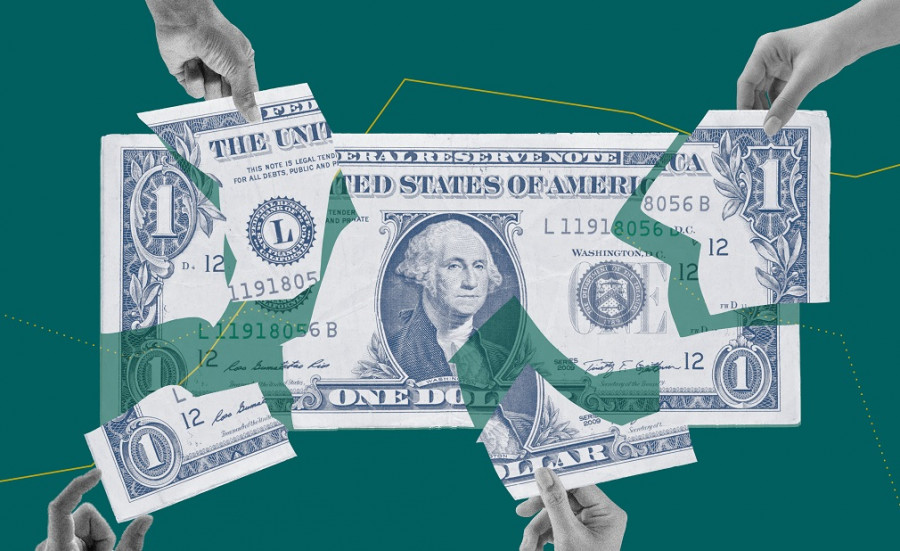The coming week is set to be eventful, centering around three key events. First, there is the Federal Reserve meeting, with its outcomes announced on Wednesday, October 29. Second, the European Central Bank's October meeting will take place the following day, October 30. Finally, the APEC summit will occur in South Korea.
These three pillars will form the week's informational agenda, while all other fundamental factors will play a secondary role for traders of the EUR/USD pair.
FOMC
The Fed is expected to cut interest rates by 25 basis points at its October meeting. There is no doubt about this, considering the preceding rhetoric from Jerome Powell and other Fed officials. Moreover, the recently released CPI report, which showed a slowdown in the U.S. core inflation rate, further reinforces this expectation.
According to the CME FedWatch tool, the probability of a 25-basis-point rate cut at the upcoming October meeting is 98.5%. Such confidence suggests the cut is already priced in; the market is likely to overlook the formal results of the October meeting. The intrigue remains regarding the future pace of monetary easing. For example, the market is almost certain that the Fed will also cut rates by 25 basis points at the last meeting of the year, in December. The probability of this scenario is estimated at 91%. This is also supported by a recent Reuters survey, in which 115 of 117 economists expressed confidence that the central bank would lower rates by 25 basis points this month, with 83 predicting another 25 basis point cut at the December meeting.
Any doubts from the Fed regarding the prospects for a December cut will be interpreted as bullish for the U.S. dollar.
Unfortunately, the Fed must make decisions and assess the current situation in an information vacuum due to the ongoing government shutdown. The central bank has access to the aforementioned CPI report, PMI indices (which came in better than expected and remained in the expansion zone), and the ADP report, which showed a 30,000-job reduction in the private sector.
Most likely, Jerome Powell will reiterate recently voiced points during the post-meeting press conference, asserting that the central bank is now more focused on the risks of employment decline, but further rate cuts will depend on incoming data, which is (for now) unavailable. The market may interpret this position as supportive of the dollar, as Powell will not directly announce another round of cuts in December.
ECB
There is no intrigue here. Following its October meeting, the European Central Bank will almost certainly maintain interest rates at current levels and confirm a wait-and-see position. As noted recently by one of the ECB representatives—acting head of the Slovenian central bank, Primoz Dolenc—"there are no reasons to change rates in the coming months." According to him, the central bank will maintain a wait-and-see position in the foreseeable future "unless new economic shocks occur." Many other ECB representatives have expressed similar views, indicating that the central bank's baseline scenario remains to maintain the status quo.
Let me remind you that according to the latest data, Germany's overall Consumer Price Index in September rose to 2.4% year-on-year—its highest level since last December (the indicator has recorded growth for the second consecutive month). The Harmonized Index also accelerated to 2.4% year-on-year—its highest level since February of this year. The overall CPI for the Eurozone rose to 2.2% year-on-year, while the core remained unchanged at 2.3%. This indicates that inflation in the Eurozone is above the ECB's target, allowing the central bank to maintain a pause at upcoming meetings.
If the central bank follows the baseline, most expected scenario, the market is likely to ignore the October meeting, especially given the upcoming APEC summit—the key event of the week.
APEC
On October 30, the Asia-Pacific Economic Cooperation (APEC) summit will kick off in South Korea, where a meeting between Donald Trump and Chinese President Xi Jinping is scheduled. This is a significant event, especially considering the escalating tensions between the U.S. and China.
It is worth noting that, ahead of the summit, both sides exchanged "warning shots": China announced new export controls on rare-earth metals (set to take effect on December 1), while the U.S. announced the imposition of 100% additional tariffs on Chinese goods, effective November 1. The outcomes of the upcoming meeting could unfold along either an escalation or a de-escalation scenario.
During a press conference in Malaysia, Donald Trump expressed confidence that Washington and Beijing could reach a "good deal" during negotiations. Nevertheless, many analysts doubt that the upcoming meeting in South Korea will yield significant breakthroughs. For example, sources from Reuters involved in preparing the visit do not rule out that personal negotiations may not produce tangible results—U.S. and Chinese leaders might make only general statements without any concrete steps toward de-escalation. In such a case, the dollar may face significant selling pressure across the market, including against the euro. Conversely, if Trump and Xi Jinping take reciprocal steps to ease trade tensions, demand for the U.S. dollar will likely increase.
Technical Analysis
From a technical perspective, the EUR/USD pair on the daily timeframe is positioned between the middle and lower lines of the Bollinger Bands indicator, and below all lines of the Ichimoku indicator (including below the Kumo cloud). This configuration suggests a priority for short positions, especially since buyers were unable to overcome the interim resistance level at 1.1650 (the middle line of the Bollinger Bands, coinciding with the lower boundary of the Kumo cloud) on Friday.
However, it should be noted that the pair has traded within the range of 1.1560–1.1730 for three weeks, with the lower boundary corresponding to the lower line of the Bollinger Bands on the D1 timeframe (and the upper boundary corresponding to the Tenkan-sen line on the W1 timeframe). All "ups and downs" in price during these three weeks occurred within this price corridor. If buyers of EUR/USD cannot overcome the interim resistance at 1.1650, sellers will take the initiative, but the 1.1560 mark will limit the downside potential.
In my view, EUR/USD traders will remain cautious in the coming days—at least until the results of the October FOMC meeting are announced. This means the pair will stay within the broad price range of 1.1560–1.1730, reacting impulsively to secondary fundamental factors (such as the IFO indices and the U.S. consumer confidence index) while awaiting the key events of the week that will set the primary direction of price movement.












